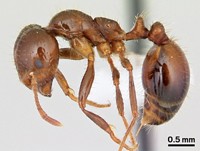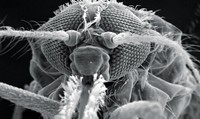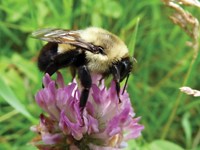Advertisement
Grab your lab coat. Let's get started
Welcome!
Welcome!
Create an account below to get 6 C&EN articles per month, receive newsletters and more - all free.
It seems this is your first time logging in online. Please enter the following information to continue.
As an ACS member you automatically get access to this site. All we need is few more details to create your reading experience.
Not you? Sign in with a different account.
Not you? Sign in with a different account.
ERROR 1
ERROR 1
ERROR 2
ERROR 2
ERROR 2
ERROR 2
ERROR 2
Password and Confirm password must match.
If you have an ACS member number, please enter it here so we can link this account to your membership. (optional)
ERROR 2
ACS values your privacy. By submitting your information, you are gaining access to C&EN and subscribing to our weekly newsletter. We use the information you provide to make your reading experience better, and we will never sell your data to third party members.
2-D Materials
Soil smell is bacterial lure
Bacteria use the earthy-smelling compound geosmin to recruit the bugs that spread their spores
by Laura Howes
April 10, 2020
| A version of this story appeared in
Volume 98, Issue 14

The delightful smell of soil is caused by small molecules like geosmin produced by the bacteria living there. In fact, every species of Streptomyces bacteria makes geosmin—but it’s not clear why they go to the trouble. To work this out, biologist Klas Flärdh at Lund University teamed up with chemical ecologist Paul G. Becher from the Swedish University of Agricultural Sciences. Becher’s team went into the Swedish woods with traps and found that tiny invertebrates called springtails, or collembolans, that live in the soil were lured into the traps containing Streptomyces coelicolor. Back at the lab, the team strapped electrodes onto the antennae of springtails and measured how their electrical activity correlated with the presence of odor samples from S. coelicolor, which they analyzed with gas chromatography. Peaks in the GC relating to geosmin and a similarly earthy terpene called 2-methylisoborneol corresponded to antennae activity. Then, the researchers looked at when in its life cycle the bacterium makes geosmin. Streptomyces species produce most of their geosmin when they’re making spores (Nat. Microbiol.2020, DOI: 10.1038/s41564-020-0697-x). Springtails attracted by geosmin eat some of the bacteria but also spread the spores that are stuck to their bodies or are contained in their feces.





Join the conversation
Contact the reporter
Submit a Letter to the Editor for publication
Engage with us on Twitter